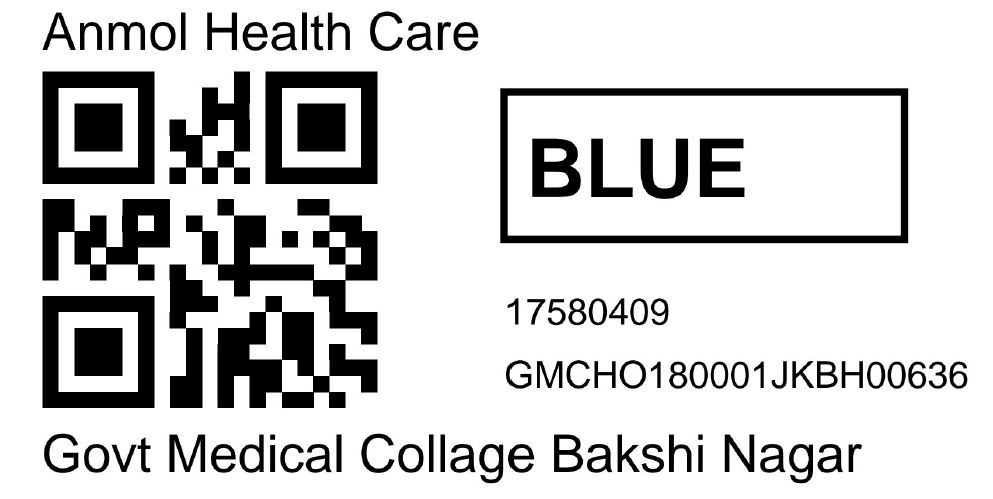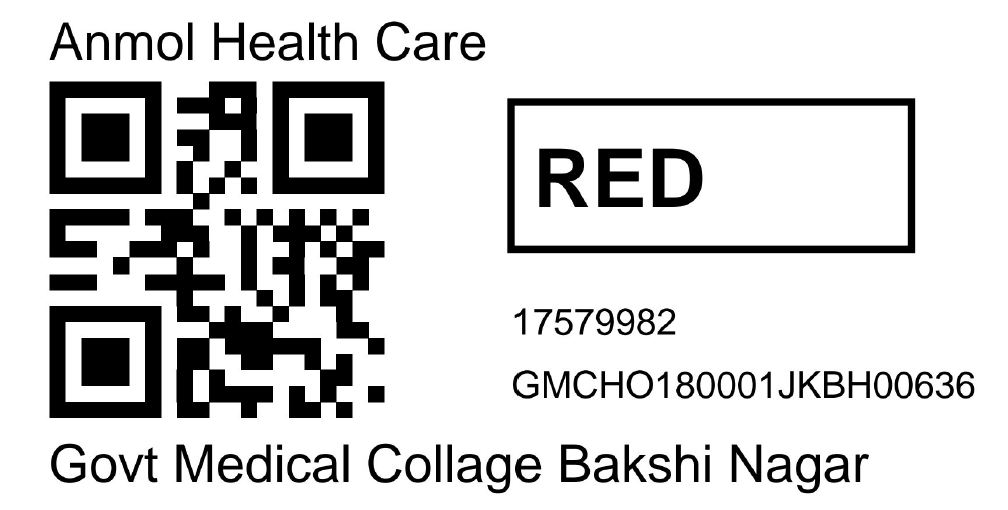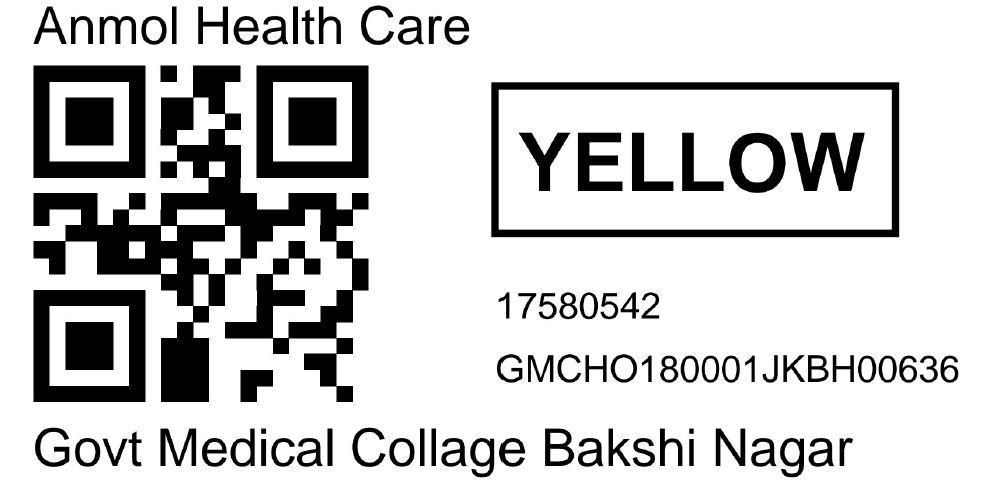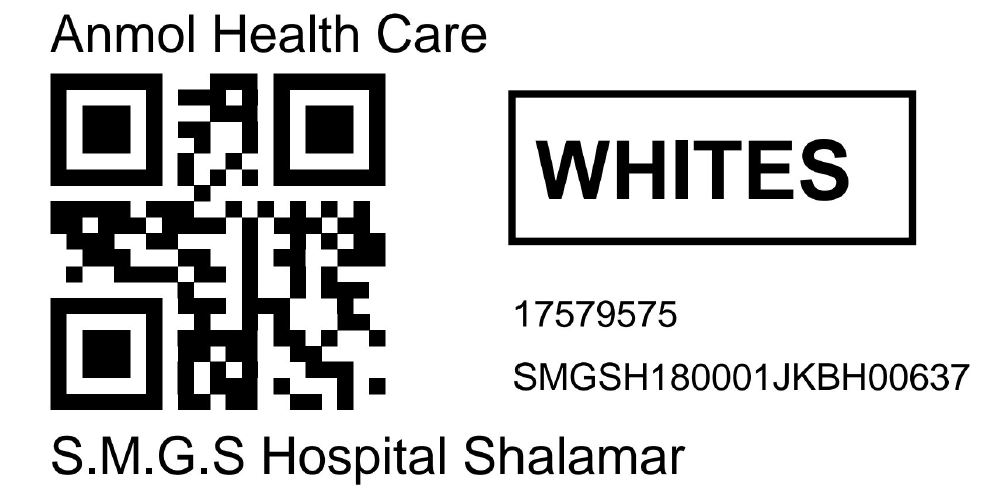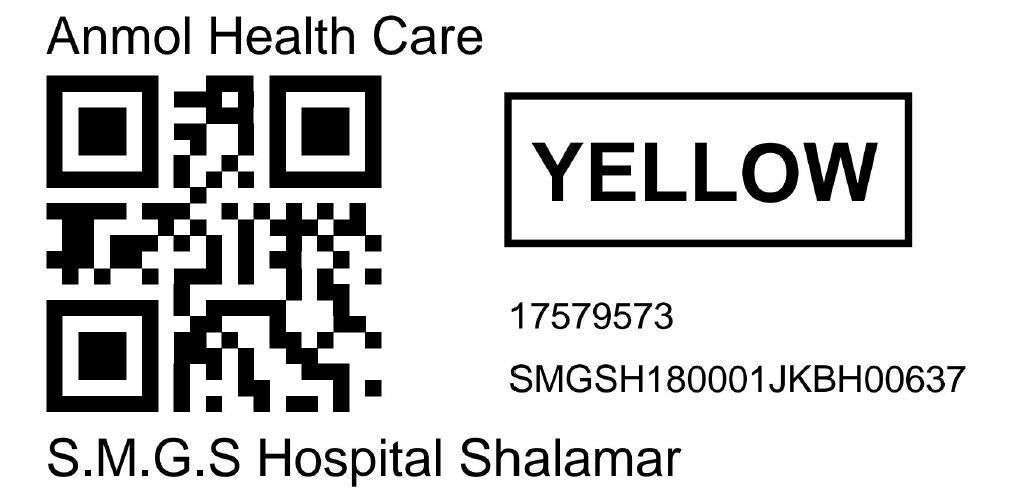Guidelines for Bar Code System to be adopted by the Occupier or Operator of a CBWTF for ensuring compliance to the BMWM Rules, 2016
1. Introduction: Bio-medical Waste Management Rules, 2016 notified on 28.03.2016 by the Ministry of Environment, Forests and Climate Change (MoEF & CC) under the Environment (Protection) Act, 1986, under Rule 4, stipulates that it is the duty of every occupier to establish a Bar code system for bags or containers containing Bio-medical Waste to be sent out of the premises or place for any purpose within one year from the date of notification. Also, Rule 5 of the BMWM Rules, 2016 stipulates that it is the duty of the every operator to establish bar coding system for handling of bio-medical waste. In order to provide guidance to the stakeholders, these guidelines have been prepared for ensuring effective enforcement of the Bio-medical Waste Management Rules, 2016.
2. Need for Bar Code System: Bar code system is required to be adopted in compliance to the BMWM Rules, 2016 by the Occupier as well as Operator of a CBWTF helps in (i) tracking of waste from source of generation to final destination for final treatment and disposal; (ii) identification of waste in the event of source of generation in case waste is disposed of improperly; and (iii) Helps in quantification of bio-medical waste generated, colour coding-wise waste handed over to the CBWTF operator by the Occupier, for further treatment and disposal in accordance with the BMWM Rules, 2016.
3. Stakeholders responsible for Implementation of the Bar Code System: (a) Prescribed Authority According to Rule 9 of the BMWM Rules, 2016, respective State Pollution Control Board (SPCB) in respect of the State, Pollution Control Committee (PCC) in respect of the Union Territory (UT) and Directorate General of Armed Forces Medical Services (DGAFMS) in respect of Armed Forces Medical Services fall under the jurisdiction of the Ministry of Defence are the prescribed authority for overall enforcement of the said rules. (b) Occupier ( i.e., Health Care Facility) Rule 3 (m) defines �occupier� as �a person having administrative control over the institution and the premises generating bio-medical waste, which includes a hospital, nursing home, clinic, dispensary, veterinary institution, animal house, pathological laboratory, blood bank, health care facility and clinical establishment, irrespective of their system of medicine and by whatever name they are called; (c) Operator of a Common Bio-medical Waste Treatment Facility (CBWTF) Rule 3 (n) defines �Operator of a common bio-medical waste treatment facility" 2 means a person who owns or controls a Common Bio-medical Waste Treatment Facility (CBMWTF) for the collection, reception, storage, transport, treatment, disposal or any other form of handling of bio-medical waste; (d) Vendors of bar coded labels or bags/containers Means a person or vendor supplying and distributing bar coded bags or container for handling bio-medical waste by the HCFs or operators of CBWTFs.
4. Specifications of the Bar Code
Bar code system may be of two types as given below: (i) Designated colour coded bags as prescribed under the BMWM Rules, 2016 containing pre-printed bar coded bags/ containers or bar coded labels which can be supplied by any vendor; and (ii) Prescribed bar coded labels which can be supplied by the vendors that can be used at the source of generation by the Occupier or Operator of a CBWTF. The pre-printed bar coded bags or bar-coded labels should have the following specifications: (a) Specification for Bar code (i) Bar code label specific to an occupier may be pre-printed directly on colour coded bags/containers or bar coded label for pasting on the colour coded bags/ containers as prescribed under the BMWM Rules, 2016 shall be used. (ii) Bar Code label should have a provision for colour coded bag as given below: � (01) - for Yellow Colour Bag � (02) - for Red Colour Bag � (03) - for White Translucent Colour � (04) - for Blue Colour card board box or Container (iii) Bar code label should also have the following provision: � Name of the Health Care Facility (HCF) � Place and Postal PIN Code; and � Unique number of the HCF may be PAN No/Authorisation Number Granted by the SPCB/PCC/DGAFMS/GST Number ( To be finalised in consultation with the Stakeholders) � Unique number of the Bag/containers ( To be finalised in consultation with the Stakeholders) (iv) In case of pre-printed bar coded bags, the thickness of bag should be as per BMWM Rules, 2016 i.e., more than 50 �. [With the above specifications, typically a bar code system shall comprise of the following details: �Colour code of a Bag, Identification of the HCF, and Unique No. of bag�] 3 (b) Specifications for the Bar coded label (i) Bar code label having the specifications given at Sl.No. 4 (a) may be procured from any vendor or may be printed at its own premises of the Occupier or may be procured through an authorised Operator of a Common Bio-medical Waste Treatment Facility (CBWTF). (ii) All bar coded labels should be pasted only at the centre or close to centre of the colour coded bag or container permitted under the BMWM Rules, 2016. However, the Bar code label should have the following specifications: � Size of bar coded label should be minimum of 100 mm X 25 mm � The barcode should be clearly legible on the label; � The Bar coded label should be tamper proof, water proof and its colour should not be faded in due course of at least for 48 hours after its use � Barcode label should be able to resist the temperatures, pressures maintained in autoclave/autoclave and should not fade its colour after autoclaving /microwaving or chemical disinfection � Barcode Labels thickness should be minimum of 50 micron and should not have any traces of heavy metals or any other objectionable chemical constituent � All barcode labels should be non-porous plastic and non-pvc � The adhesive used for bar code label should be pressure sensitive and should be of acrylic based adhesive and after use of Labels on the colour coded bags or containers, the label should not peel off on its own or by force.
5. Specifications of Bar Code based Waste Management System (a) For Occupiers: Minimum tools required for occupier (s) are as follows: (i) Ensure use of Bar coded bags/containers for collection of segregated biomedical waste at source. (ii) Access Login and password for Bar Code based waste management software operated by the Common Bio-medical Waste Treatment Facility (CBWTF). (iii) Collect Proof (counter signed by the CBWTF Operator) of waste collection comprise of date, time, weight of each colour coded bag/container. (iv) Generate reports from Bar Code based Waste Management System and maintain records periodically and update in the website. (b) For Operator of a CBWTF: (i) The Operator of a CBWTF should purchase and operate Bar Code based Waste Management System software centrally. The software should support different multiple user logins for each HCF (Occupier), admin login and regulatory login (for respective SPCB/PCC, CPCB, MoEF & CC, Central/State Health Departments). Such logins should be provided to the regulatory authorities voluntarily without any charges). The application software should be loaded at any cloud server or servers of SPCB/PCC (if available) 4 (ii) Dedicated Bar code Scanner and /or Bar Code Scanner Based Mobile App. : The scanner should have the provision of data storage ( in case of problem in server connectivity) for lateral retrieval, as and when required. However, data such as HCFs-wise time at which waste collected, quantity of waste (colour coded-wise) and total waste should be transferred immediately to the data servers of SPCB/PCC. Bar code Scanner and /or Bar Code Scanner Based Mobile App. should have connectivity (wire or wireless) with the digital weighing machine. (iii) For each bag scanned by the Bar code Scanner and /or Bar Code Scanner Based Mobile App. should automatically transfer the information (which include label information, date, time and weight of each bag/container) to centrally located Bar Code based Waste Management System software. There should not be any manual intervention of the Occupier with respect to the bio-medical waste generation quantities and its transfer. (iv) If the barcode scanner/app has any breakdown due to problem in network or app software in transferring the data to the server, there should be provision for updating the information through alternate means with prior intimation to SPCB/PCC. (v) Dedicated Bar code Scanner and /or Bar Code Scanner Based Mobile App should have � Must account every bag with a barcode and capture data pertaining to s date, time, label data and weight of each bag/container only within the premises of the HCF. � GPS provision. � Wire or wireless (Blue Tooth) based connectivity between scanner and weighing machine. � Weighing machine should be able to weigh about 25 Kg (max.). with 20g accuracy. � Scanner should be attached with suitable printer at the temporary waste storage area. (v) Upon completion of scanning and weighing all bags/containers, the scanner system should generate print of a waste receipt automatically which shall be signed and handed over to the HCF immediately. (vi) CBWTF operator should ensure a Blue Tooth based weighing machine should be kept in transportation vehicle which is used for collection of waste from member HCFs. (vii) The Operator is also required to maintain all the records as per BMWM Rules, 2016; (c) Specifications of the Bar code Scanner and/or App based mobile scanner: (i) App based Mobile barcode scanner � 1 GB and above internal memory � 5+ MP camera � AGPS or GPS supported 5 � Internet 2G and GPRS � Bluetooth 2.0 (ii) Dedicated barcode scanner � 1 GB and above internal memory � 2G and GPRS � AGPS or GPS supported (iii) Digital Printer (iv) Digital weighing machine [ Note: Item at Sl. No. 5 ( C ) (i) and (ii) may come seperately or in combination as an integrated system]
6.Responsibility of the Occupier/Operator of a CBWTF and the Manufacturer or Supplier of Bar Coded Label or Pre-Printed Bar Coded Bags/Containers
(i) Responsibity of the Occupier w.r.to the Bar Code System: � Procurement of the Bar Coded Labels or Pre-printed colour coded Bags and containers fulfilling the specification as given under these guidelines from the vendor (s) on charge basis is the sole responsibility of the occupier; � Intimate prescribed authority about the bar coded labels or preprinted bar coded bags or containers as and when procured. � Ensure use of bar coded label on the respective specified colour coded bag or container or pre-printed bar coded and specified colour coded bag or container for segregation of waste at source of its generation. � At the temporary waste storage area within the HCF a representative of occupier to ensure that all the bags and containers are scanned and collect the waste receipt generated by the scanner. Occupier Vendor of Bar Coded Bags/Labels Operator of a CBWTF Bar Code Label or bag SPCB/PCC Vendor of Bar Code Waste Management Software 6 (ii) Responsibity of the Operator of CBWTF w.r.to the Bar Code System: � Supply of Bar Coded Labels or Pre-printed colour coded Bags and containers fulfilling the specification as given under these guidelines to the Occupier (s) or member HCFs of the facility, on charge basis, and on demand. However, the Occupier may also opt to procure directly from the manufacturer. � Intimate prescribed authority (i.e., SPCB/PCC) about the launch of bar coded based waste management system. � To accept only the specified colour coded bags or containers labelled with indicated bar code system or pre-printed bar coded specified colour coded bag or container. � Scan all such bio-medical waste collected in the specified colour coded bags or container at the designated place only and provide a hard copy of the waste collection receipt generated by the scanner system. � Ensure that all the data should be stored and made available to all the users or member HCFs, atleast for a period of five years. � Access to the software system should be provided to the prescribed authority i.e. SPCB/PCC, CPCB, MoEF & CC, Central/State Health Departments) voluntarily. (iii) Responsibity of the supplier or vendor of the Bar Code System: � To supplier or vendor should supply only the bar coded label or Pre-printed colour coded Bags and containers fulfilling the specification as given under these guidelines on charge basis;
7. Other issues to be discussed in consultation with the Stakeholders (i) Responsibilities of various stakeholders (ii) Recovery of cost to CBWTF (iii) Charges to be levied on the Occupier or Operator of a CBWTF for maintaining Central Storage System. (iv) Expected support from SPCBs/PCCs.

